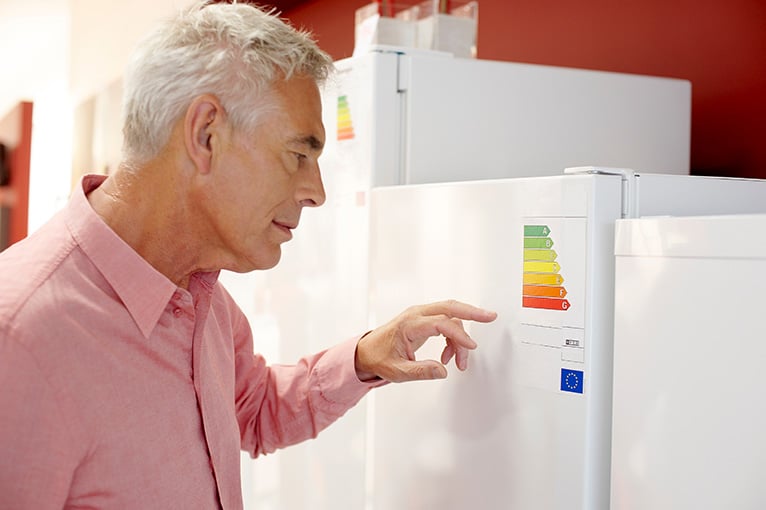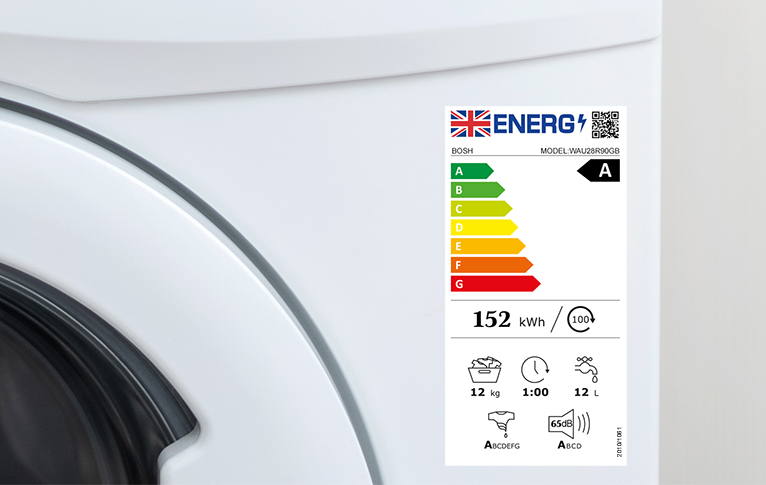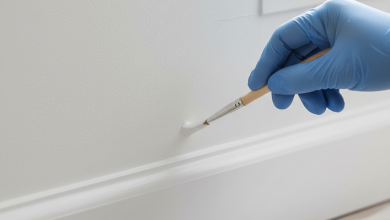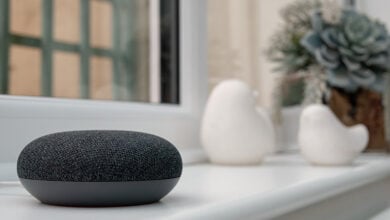What are energy labels and how are they changing?
Whether you’re dreaming of upgrading to a futuristic smart fridge or just need to replace a washing machine on its last legs, energy efficiency is one thing you shouldn’t ignore when it comes to buying a new home appliance. The more energy efficient an appliance is, the likelier it is to last longer and work better than a model that uses more energy.
Comparing the energy labels of different models is one of the quickest ways to find an appliance that could reduce both your energy bill and your carbon footprint. In 2021, the Label 2020 project is changing the way they work. Here’s everything you need to know about the new UK energy labels in England, Scotland, Wales and Northern Ireland.
What are energy labels?

An energy label clearly points out the energy efficiency rating of a household electrical appliance, in a visual way. Whether you buy the appliance online or in-store, an energy label should be provided with it.
Why are energy labels put on appliances?
Energy labels tell you exactly how much electricity an appliance uses, as well as other information that’s specific to the product category. For example, a washing machine’s load capacity can be found on its energy label. So, energy labels cut down on the time you’d spend researching the overall energy efficiency of an appliance before choosing to buy it.
They also encourage manufacturers and retailers to produce and sell energy efficient products.
How do energy labels work?

At the moment, energy labels use a ranking scale ranging from A+++ to G, with the highest efficiency appliances being awarded Class A+++. The least energy efficient appliances are placed in Class G.
If you buy an A+++ fridge (200L) rather than an A+ one, then you could save £100 over the fridge’s lifetime, according to the Label 2020 project!
79% of consumers look at energy labels when they’re in the market for a new appliance, according to the European Commission. However, research has found that the current ranking scale (as above) is confusing to understand. Plus, many of the appliances available on the market are already in the top two to three ranks, making it hard for consumers to tell which model is the most energy efficient.
How energy labels are changing

From March 2021, a new energy label will be gradually introduced across the UK. New features on the label include:
- An improved ranking scale: A simpler scale of Classes A to G. So, classes A+++, A++ and A+ have been scrapped.
- A new QR code: Access useful product information by scanning the QR code featured on the label with your smartphone.
- New and adapted icons: New icons showing more product features. For example, there will be a new icon showing a washing machine’s spinning efficiency class. In addition, some of the icons showing product features have been adapted.
- Energy consumption will be more obvious: The energy consumption of the appliance will be moved to the middle of the label. This is so it’s more prominent.
What appliances must have energy labels?
From the kitchen to your bedroom, many of the appliances that you use every day are likely to have an energy label on their packaging. The new UK labels will be found on:
From March 2021:
- Fridges, freezers and wine storage fridges.
- Washing machines.
- Washer-dryers.
- Dishwashers.
- TVs and electronic displays.
You can see what the new energy labels for each of these appliances look like on Label 2020.
From September 2021:
- Light sources such as lamps.
From 2022 (expected):
The following products will feature the new labels once the relevant UK regulations are in place.
- Air conditioners.
- Tumble dryers.
- Vacuum cleaners.
- Water heaters.
Whilst the new UK energy labels are phased in, some products may have both the old and new labels for a short time.




